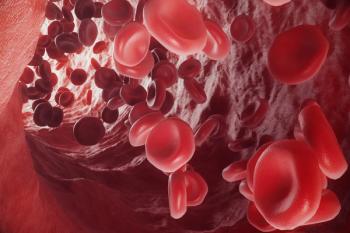
Electronic PRO Survey Yields Improved HRQOL at 3 Months in Metastatic Cancer
Patients with metastatic cancer had improved health-related quality of life, physical function, and symptom control at 3 months when a weekly electronic patient reported outcomes survey was used.
The use of a weekly electronic patient reported outcomes (PRO) survey resulted in improved physical function, symptom control, and health-related quality of life (HRQOL) for patients with metastatic cancer compared with usual care, according to a study (NCT03249090) published in JAMA.
From baseline to 3-months, patients in the PRO group experienced an improvement in European Organisation for Research and Treatment of Cancer Quality of Life Questionnaire (QLQ-C30) score from 74.27 to 75.81 for physical function compared with 73.54 to 72.61. in the control group. Patients in the PRO group also saw an improvement in symptom control of 77.67 to 80.03 vs 76.75 to 76.75 in the control group. In regard to HRQOL, the PRO group had a score improvement from 78.11 to 80.03 vs 77.00 to 76.50 in the control group.
A total of 1191 patients were included across 52 community oncology sites and were randomized 1:1 to either the PRO or control group. The median age was 63 years, 58.3% were female, 79.5% were White, 26.6% were recruited from rural locations, 39.4% had a high school education or less, and 16.9% had limited internet experience. At 3-months, 97.3% of patients remained in the study and 97.1% completed the questionnaire.
In the responder analysis, a clinically meaningful change in outcomes was observed at 3 months for those in the PRO group compared with the control group. In the PRO group, 13.8% of patients had physical function benefits vs the control group (OR, 1.35; 95% CI, 1.08-1.70; P = .009). In the PRO group, 16.1% of patients had symptom control benefits vs the control group (OR, 1.50; 95% CI, 1.15-1.95; P = .003). Additionally, 13.4% of patients in the PRO group had a benefit regarding HRQOL compared with the control group (OR, 1.41; 95% CI, 1.10-1.81; P = .006).
During months 6 and 9, patients still the mean differences maintained statistically significance, but not during month 12. Notably, 42.7% of patients were no longer on the study after 12 months of follow-up.
In the sensitivity analysis, a total of 12.2% more patients in the PRO group experienced physical function benefits vs the control group (OR, 1.43; 95% CI, 1.10-1.84; P = .007). Moreover, 11.4% more of patients in the PRO group experienced symptom control benefit compared with the control group (OR, 1.51; 95% CI, 1.14-2.00; P = .004). Additionally, 13.1% more patients in the PRO group had HRQOL benefit vs the control group (OR, 1.69; 95% CI, 1.24-2.31; P = .004).
In terms of exploratory outcomes, an analysis highlighted a significant mean difference in symptom trajectories favoring the PRO group at all time points for adverse effects such as nausea, insomnia, appetite loss, and diarrhea, but not for pain, dyspnea, or constipation.
Of those in the PRO group, 91.5% completed the survey. Reminder calls for those who did not complete the survey occurred in 13.9% of cases. Overall, 84.4% of surveys were completed by patients, 3.8% by caregivers, and 2.7% by staff.
Of note, 76.8% of patients at 3 months said that electronic symptoms monitoring made them feel in greater control of their care, 72.4% said it improved discussions with their care team, 91.6% felt it was relevant to their care, and 89.5% would recommend it to another patient.
In the PRO group, dropout rates were higher at 6.9% vs 1.2% in the control group. These were attributed to survey fatigue in 1.5% of patients in the PRO group and 0.5% in the control group.
Reference
Basch E, Schrag D, Henson S, et al. Effect of electronic symptom monitoring on patient-reported outcomes among patients with metastatic cancer: a randomized clinical trial. JAMA. Published online June 5, 2022. doi:10.1001/jama.2022.9265
Newsletter
Stay up to date on recent advances in the multidisciplinary approach to cancer.

















































































